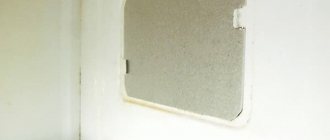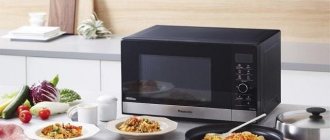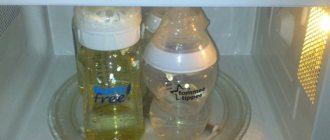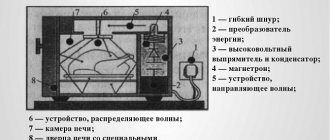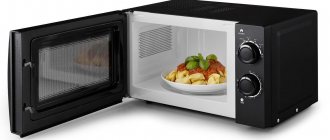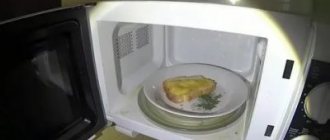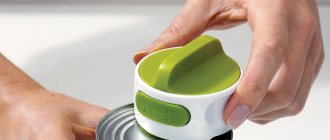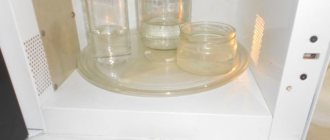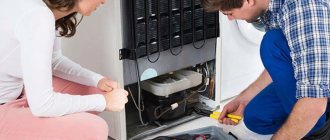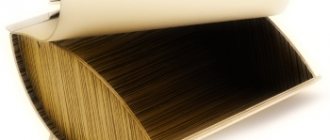Types of plastic
Plastic is a material made up of long chains of polymers that contain several thousand repeating units called monomers. ()
Although they are typically made from petroleum and natural gas, plastics can also be made from environmentally friendly materials such as wood pulp and cotton lint.
At the base of most plastic products you will find a recycling triangle with a number - the identification code of the raw material - from 1 to 7. The number indicates the type of plastic the product is made from.
Seven types of plastics and products made from them include (, ):
- Polyethylene terephthalate (PET, or PET) : soda bottles, peanut butter and mayonnaise jars, and vegetable oil containers
- High-density polyethylene (HDPE, or HDPE) : detergent and hand soap containers, milk jugs, butter containers, and protein powder containers
- Polyvinyl chloride (PVC, or PVC) : water pipes, electrical wiring, shower curtains, medical tubing, and artificial leather products
- Low-density polyethylene (LDPE, or LDPE) : plastic bags, squeeze bottles, and food packaging
- Polypropylene (PP, or PP) : bottle caps, yogurt containers, food storage containers, disposable coffee capsules, baby bottles and shakers
- Polystyrene or expanded polystyrene (PS) : packaging for nuts and disposable food containers, plates and disposable cups
- Other : includes polycarbonate, polylactide, acrylic, acrylonitrile butadiene, styrene, fiberglass and nylon
Some plastics contain additives to achieve the desired properties of the finished product.
These additives include colorants, strengtheners and stabilizers.
What to remember
Plastic is made primarily from petroleum. There are several types of plastic that have many uses.
Is it safe to put plastic in the microwave?
The main concern with using plastic in microwaves is that it can cause additives, some of which are harmful, to leach into your food and drinks.
The main chemicals that may be unsafe are bisphenol A (BPA, or BPA) and a class of chemicals called phthalates, which are used to increase the flexibility and durability of plastic.
These chemicals, especially BPA, disrupt your body's hormones and are linked to obesity, diabetes, and reproductive problems. (, , ,).
BPA is found primarily in polycarbonate (PC) plastics (number 7), which have been widely used since the 1960s to make food storage containers, drinking glasses and baby bottles. ()
BPA from these plastics can leach into food and drinks over time and when the plastic is exposed to heat, such as when it is microwaved. (, , )
Today, however, some manufacturers of food preparation, storage and serving products have replaced PC plastic with BPA-free plastic such as PP.
The US Food and Drug Administration (FDA) also bans the use of BPA-based materials in baby food packaging, pacifiers and baby bottles. ()
However, research has shown that even BPA-free plastics can leach other hormone-disrupting products, such as phthalates, or BPA alternatives, such as bisphenol S and F (BPS and BPF), into food when microwaved. (, , , )
Therefore, it is generally a good idea to avoid microwave processing of plastic unless - according to the FDA - the container is specifically labeled as microwave safe. ()
What to remember
Microwave plastic can leach harmful chemicals such as BPA and phthalates into your foods and drinks. Therefore, you should avoid microwave plastic unless it is labeled for that specific use.
Plastic dishes for microwave ovens
First of all, it is worth mentioning the fact that there are a huge number of types of plastic, including food plastic. Some of them can withstand heating up to 100 °C and above, others begin to melt even with a slight increase in temperature.
Polystyrene, polyvinyl chloride and polyethylene are not intended to be heated by any means. Therefore, you should not put it in the microwave:
- disposable plates, spoons and forks;
- disposable glasses (both transparent and colored);
- drink bottles;
- containers for yoghurt, sour cream and curd desserts;
- plastic bowls from blenders and mixers;
- kitchen bowls designed for washing fruit.
Polyamides and polypropylene are quite suitable for use in microwave ovens. It is from these materials that food containers are made, in which it is customary to take food with you.
When purchasing, it is important to pay attention not only to the presence of the “microwave safe” symbol, but also to the country of origin. Most plastic tableware is brought to Europe from China, and its quality usually leaves much to be desired. Even if the container does not melt, under the influence of heat and electromagnetic radiation, harmful substances can be released from it - for example, the well-known phthalates. When they get into food, they make it hazardous to health.
The main rule is to choose plastic utensils from trusted brands.
There is one more nuance - temperature. Plastic products always indicate how much heat they can withstand. If you exceed the maximum possible values by even a few degrees, the material will melt, after which it will be impossible to use such utensils for their intended purpose. The easiest way to “kill” a container is by trying to cook something sweet or fatty in it: sugar crystals, turning into caramel, can heat up to 188 ° C, and oils boil at 160–270 ° C.
We recommend: 5 ways to get rid of burning smell in the microwave
Other ways to reduce your exposure to BPA and phthalates
Microwave plastic accelerates the release of BPA and phthalates, but that's not the only way these chemicals can get into your food or drinks.
Other factors that can increase chemical leaching include the following: (, )
- hot foods are placed in plastic containers
- containers are cleaned using abrasive materials such as steel wool, which may cause scratches
- containers are used for long periods of time
- Containers can be washed in the dishwasher many times
As a general rule, plastic containers with cracks, spots, or signs of wear should be replaced with new BPA-free plastic containers or glass containers.
Today, many food storage containers are made from BPA-free polypropylene.
Plastic food packaging may also contain BPA and phthalates. ()
So if you need to cover food in the microwave, use wax paper, parchment paper, or a paper towel.
What to remember
Plastic containers that are scratched, damaged or worn pose an increased risk of chemical leaching.
Requirements for plastic utensils
The consumer characteristics of plastic utensils influence its final choice and are considered the most important for its operation.
- This type of cookware should be safe to use. It is extremely important that it fully complies with all established hygienic and medical standards.
- The aesthetic side of the issue is also considered important - the dishes should be visually attractive. These days, plastic sets are distinguished by a large selection of colors and the presence of stylish designs.
- Heat resistance properties - the product must retain all its qualities when in contact with food and drinks in a hot state.
- Use for a variety of dishes, the ability to store food in the refrigerator or freezer, and also for use in the microwave.
- Increased resistance to alkali, acids or fats.
- The presence of thermostaticity is the ability of the consumer to hold a heated plate or glass in his hands and not get burned.
- Elasticity. For plastic knives and forks - the ability to easily cut and spear food without breaking the devices themselves.
- Resistant to a range of influences.
- Possibility of choosing different shapes and parameters.
- Good capacity, compact and light.
- Eco-friendly component and simplified disposal.
Professionals advise that kitchen utensils made from unsafe material such as plastic should not be used more than once - this warning applies to all plastic utensils. Plastic containers become extremely dangerous for the body when they are reused.
It is better not to purchase plastic cups at all, since they cannot be recycled at all. Moreover, the material contains a large number of toxic components, which, when drinking hot drinks, certainly end up in the body and cause irreparable harm to it.
Always look at the labeling of plastic products offered by companies - these detailed markings on disposable utensils will tell almost everything about its performance properties. For the average consumer, all types of disposable tableware are the same, but in fact, not every type of plastic is suitable for active use for household purposes; not all of them can withstand heating or temperature changes.
Let's sum it up
Plastics are materials made primarily from petroleum and have many uses.
Although many food storage, preparation and serving products are made of plastic, microwaving them can accelerate the release of harmful chemicals such as BPA and phthalates.
Therefore, if a plastic product is not considered microwave safe, avoid microwaving it and replace worn plastic containers with new ones.
What not to use in the microwave
- It is strictly forbidden to use metal and iron utensils or enamel products in the microwave. Microwaves do not pass through these materials, and as a result, the food does not warm up. In addition, they can cause sparks when the oven is operating;
- Items made of porcelain or earthenware with gilding and designs, as they sparkle when heated;
- Porcelain, earthenware and glass products with chips, cracks and other defects. This will cause the material to crack when heated, causing items to fly apart or break inside the oven or when removed;
- Cheap plastic and plastic that is not resistant to high temperatures;
- Plastic utensils made of PVC and polystyrene;
- Cardboard dishes are not microwave safe due to their waxy coating. With prolonged heating, the wax melts and gets into the food;
- Ceramic products without glaze coating on each side;
- Aluminum cookware with high sides, which is used for baking in a standard oven;
- Crystal objects that contain lead, silver and other metals, and also have an uneven surface. When heated in the oven they will break;
- Dishes made of thin glass, as it is not resistant to high temperatures and can shatter into fragments right in the microwave;
- Polyethylene film. Thin material will melt, and thick material will create an unpleasant odor;
- Wooden objects and products with wooden inserts or decorative elements, since wood shrinks and deteriorates when exposed to high temperatures.
Do not place food in a microwave oven that is tightly covered with a lid or film, otherwise an explosion may occur. If necessary, cover the food with film with holes to allow steam to escape. Or use a special microwave lid.
